Electro Harmonix H.O.G.2 Handleiding
Electro Harmonix
Hifi systeem
H.O.G.2
Bekijk gratis de handleiding van Electro Harmonix H.O.G.2 (8 pagina’s), behorend tot de categorie Hifi systeem. Deze gids werd als nuttig beoordeeld door 84 mensen en kreeg gemiddeld 4.9 sterren uit 42.5 reviews. Heb je een vraag over Electro Harmonix H.O.G.2 of wil je andere gebruikers van dit product iets vragen? Stel een vraag
Pagina 1/8

H.O.G.2
H.O.G.2
H.O.G.2
H.O.G.2H.O.G.2
Harmonic Octave Generator – Guitar Synthesizer
Congratulations on your purchase of the HOG2! The HOG2 is an Octave and Harmonic Generator/Guitar Synthesizer that
can simultaneously generate multiple octaves and harmonics from your input signal. Whether you play single notes, arpeggios or full
chords, the HOG2 will track every note you play. Built-in to the HOG2 are 7 Expression Modes that enable you to modify your sounds using
a standard Expression Pedal, a MIDI Controller, or the Expression Button on the HOG2 itself. Further sound sculpting is achieved through an
Amplitude Envelope Generator and a 2nd-Order Low Pass Resonant Filter.
Audio Connections and Controls
MASTER VOL Slider — Sets the overall output volume of the HOG2 at the OUTPUT jack. All voices including the DRY OUTPUT signal
are affected by the MASTER VOL slider. The HOG2’s output volume will increase as this slider is pushed upward.
DRY OUTPUT Slider — Controls the output volume of your original, unaffected DRY signal before it exits the HOG2 from the OUT-
PUT jack. The DRY OUTPUT volume will increase as this slider is pushed upward. The DRY OUTPUT signal bypasses all of the Expression
Modes, the Envelope and the Filter.
INPUT Jack — Connect your instrument to the HOG2’s INPUT jack using a standard ¼” instrument cable. The input impedance pre-
sented at the INPUT jack is 1.3M .Ω
DIRECT OUTPUT Jack — This jack outputs a buffered version of the signal present at the INPUT jack. Using this jack will NOT put
any additional load on your instrument. The output impedance at this jack is 150 ohms.
OUTPUT Jack — This is the HOG2’s main output. Connect this jack to the input of your amplifier, mixer or computer using a standard
¼” instrument cable. The output impedance presented at this jack is 60 ohms.
WARNING: Your HOG2 comes equipped with an Electro-Harmonix 9.6DC-200BI power supply (same as used by Boss® & Ibanez®:
9.6 Volts DC 200mA). The HOG2 requires 170mA at 9VDC with a center negative plug. The HOG2 does not take batteries. Using the
wrong adapter may damage your unit and void the warranty..

STATUS LED — When the STATUS LED is lit, the HOG2 is in effect mode. When the STATUS LED is off, the HOG2 is in Buffered Bypass
mode.
BYPASS Footswitch — Press the BYPASS Footswitch to toggle the HOG2 between Bufferred Bypass and Effect mode.
Voice Controls
There are 10 Voice sliders on the HOG2. Each features a white cap with a black line and controls the output volume for its assigned voice.
Throughout this manual we will refer to all of the generated octaves and harmonics as voices.
-2 OCTAVE Slider — Controls the output volume of the -2 OCTAVES voice, which is 2 octaves below the original input signal. The -2
OCTAVES signal will be 1/4 the frequency of the input signal. As this slider is pushed upward, the volume of the -2 OCTAVEs voice increas-
es.
-1 OCTAVE Slider — Controls the output volume of the -1 OCTAVE voice, which is 1 octave below the original input signal. The -1
OCTAVE signal will be 1/2 the frequency of the input signal. As this slider is pushed upward, the volume of the -1 OCTAVE voice increases.
ORIGINAL Slider — Controls the output volume of the ORIGINAL voice. The ORIGINAL voice is your Dry signal sent through the
Expression Modes, Envelope and Filter, so it is treated just like all other voices with a white cap. The volume of the ORIGINAL voice will
increase as this slider is pushed upward.
+5TH Slider — Controls the output volume of the +5TH voice. The pitch of this voice is a perfect 5th note above the original input
note. For example if you play an A note, the HOG will output the first E note above the A. The +5TH signal will be 1.5 times the frequency
of the input signal. The volume of the +5TH voice increases as this slider is pushed upward.
+1 OCTAVE Slider — Controls the output volume of the +1 OCTAVE voice, which is 1 octave above the original input signal. The +1
OCTAVE signal will be twice the frequency of the original input signal. As this slider is pushed upward, the volume of the +1 OCTAVE signal
will increase.
+1 OCTAVE +5TH Slider — Controls the output volume of the +1 OCTAVE +5TH voice. The pitch of this voice is a perfect 5th note
above the first octave above the original input note. For example if you play an A note, the HOG will output an E note one octave higher
than the +5TH slider's E note. The +1 OCTAVE +5TH signal will be 3 times the frequency of the input signal. The volume of the +1 OCTAVE
+5TH voice increases as this slider is pushed upward.
+2 OCTAVES Slider — Controls the output volume of the +2 OCTAVES voice, which is 2 octaves above the original input signal. The
+2 OCTAVES signal will be 4 times the frequency of the original input signal. As this slider is pushed upward, the volume of the +2
OCTAVES signal increases.
+2 OCTAVES +3RD Slider — Controls the output volume of the +2 OCTAVES +3RD voice. The pitch of this voice is a major 3rd
note above the second octave above the original input note. For example if you play an A note, the HOG will output a C# note over two
octaves above the input. The +2 OCTAVES +3RD signal will be 5 times the frequency of the input signal. The volume of the +2 OCTAVES
+3RD voice will increase as this slider is pushed upward.
+3 OCTAVES Slider — Controls the output volume of the +3 OCTAVES voice, which is 3 octaves above the original input signal. The
+3 OCTAVES signal will be 8 times the frequency of the original input signal. As this slider is pushed upward, the volume of the +3
OCTAVES signal increases.
+4 OCTAVES Slider — Controls the output volume of the +4 OCTAVES voice, which is 4 octaves above the original input signal. The
+4 OCTAVES signal will be 16 times the frequency of the original input signal. As this slider is pushed upward, the volume of the +4
OCTAVES signal will increase.
SPECTRAL GATE Button and LED — When the SPECTRAL GATE LED is lit, the Spectral Gate function is active and in the sig-
nal path. Press and release the SPECTRAL GATE Button to toggle this function On/Off. The Spectral Gate emphasizes the loudest frequency
or harmonic of the input signal and progressively reduces the volumes of other frequencies and harmonics in the input signal. Use the
Spectral Gate to simplify the sound of the HOG2 and reduce background noise.
Envelope and Filter Controls
ENVELOPE LOWER UPPER& Sliders — The Envelope sliders control the amplitude Attack or Decay of the voices. The
LOWER slider controls the lower 5 voices (-2 Octaves to +1 Octave); the UPPER slider controls the upper 5 voices (+1 Octave +5th to +4
Octaves).

The Envelope sliders have a center-detent; they click into place at the center of their travel. When set to the center-detent, there is no
change to the voices’ envelope: you have an instantaneous Attack and an infinite Decay. As you push the sliders up from the center, the
rate of Decay increases until the notes are barely audible. As you push the slider down from the center, the rate of Attack increases so that
your notes slowly fade-in.
ENVELOPE ON LED — Indicates when the Envelope section is in or out of the signal path. When the LED is lit, the Envelope is On
and in the signal path. When the LED is off, the Envelope section is bypassed.
ENVELOPE Footswitch — Toggles the Envelope section ON / OFF.
FILTER FREQUENCY Slider — Controls the cutoff or peak frequency of the 2nd-Order lowpass filter. As the FREQUENCY slider is
pushed upward, the cutoff frequency of the filter rises.
FILTER RESONANCE Slider — Controls the resonance, Q or peak of the filter. As the RESONANCE slider is pushed upward, the
filter emphasizes the cutoff frequency more, creating an audible peak at the setting of the FREQUENCY slider.
All of the generated voices go through the filter at all times except in Wah Wah mode. If you do not want to hear the effects of the filter,
move the FREQUENCY slider to its top position and the RESONANCE slider down to its bottom position.
Expression Controls
EXP. MODE Switch and LEDs — The HOG2 has 7 different Expression modes. Each time you press the EXP. MODE button the
HOG2 selects the next mode in a clockwise rotation. It starts with BEND 1 OCTAVE, ends with FILTER and then cycles back to BEND 1
OCTAVE. Each Expression Mode has it own LED which lights up when the mode is selected. The 7 Expression Mode LEDs form a semi-circle
around the EXPRESSION MODE Switch.
EXP. REVERSE Switch and LED — This button reverses the direction of the Expression Mode currently selected. For example
with the EXP. REVERSE LED off, in BEND 1 OCTAVE mode, as you move the expression pedal from heel to toe down, the pitch of the voices
will continuously rise until you hit 1 Octave above. Press the EXP. REVERSE button so its LED lights up. As you move from heel to toe down,
the pitch of the voices will continuously fall until you hit 1 octave below.
EXP. BUTTON Footswitch — This momentary footswitch enables you to take advantage of the 7 Expression Modes without
needing an Expression Pedal. Pushing down on the EXP. BUTTON is equivalent to the toe down position of the Expression Pedal. Taking
your foot off of the EXP. BUTTON is equivalent to the heel position of the Expression Pedal.
The 7 Expression Modes are as follows (all descriptions assume you are using an Expression Pedal):
BEND 1 OCTAVE —Continuously bends all of the generated voices up to 1 Octave UP (or 1 Octave DOWN with EXP. REVERSE LED
ON). This is similar to using the whammy bar on a guitar or pitch bend wheel on a synthesizer. You can use this effect to obtain intervals
that are between the original note and the octave. For example, you can set the expression pedal to obtain a major 6th interval.
BEND 1 STEP —Continuously bends all of the generated voices up to 1 Step UP (or 1 Step DOWN with EXP. REVERSE LED ON).
Same effect as BEND 1 OCTAVE except the range is limited to just 1 step or the major 2nd interval. For example you can bend from an A
note to a B note. This mode is especially nice for producing detuned effects.
VOLUME —Continuously varies the volume of the generated voices. As you move the pedal from heel to toe down, the volume will
increase from 0 to 100% (or 100% to 0 with EXP. REVERSE LED ON).
FREEZE + GLISS —When in the heel position, you can play your instrument normally. When the toe is down, the HOG2 will freeze
whatever notes you were playing at the time of pushing the Expression pedal down. You can then play over these notes with your DRY
instrument. In between heel and toe down, the HOG2 will slide to the new note you play, from the previous note you played. The speed of
the glissando is determined by the position of the Expression pedal, the closer the Expression pedal is to toe down, the slower the slide
speed will be. For example, if you play an A note and then move the Expression Pedal down to 50%, it will freeze the A note. If you then
play a B note, the HOG will slide up to the B note. This function is similar to portamento on a synthesizer. Freeze + Gliss is a very tricky
mode, it takes some time to master. Though it can be frustrating at first, once you get it, it will open new doors to how you play guitar.
Please note:
Please note:
Please note:
Please note:Please note: Moving the Expression Pedal to the heel position erases the frozen note in memory.
FREEZE + VOLUME —Uses the Freeze function described in the Freeze + Gliss section but instead of Glissando, the Expression
Pedal will act like a Volume control for the Freeze function. The further down you push the Expression pedal, the louder the frozen notes
will be. When the Expression Pedal is in the heel position, you will not hear the octaves or harmonics.
Please note:
Please note:
Please note:
Please note:Please note: Moving the Expression Pedal to the full heel position erases the frozen note in memory.
Product specificaties
| Merk: | Electro Harmonix |
| Categorie: | Hifi systeem |
| Model: | H.O.G.2 |
Heb je hulp nodig?
Als je hulp nodig hebt met Electro Harmonix H.O.G.2 stel dan hieronder een vraag en andere gebruikers zullen je antwoorden
Handleiding Hifi systeem Electro Harmonix

23 Augustus 2023

27 Juni 2023

11 Juni 2023

30 Mei 2023

28 Mei 2023

27 Mei 2023

23 Mei 2023

20 Mei 2023

17 Mei 2023

13 Mei 2023
Handleiding Hifi systeem
- Electro-Voice
- Telefunken
- ILive
- Bang And Olufsen
- AudioAffairs
- Camry
- Cambridge
- Bowers And Wilkins
- Bose
- Homedics
- SVS
- Brigmton
- ANT
- Netgear
- Galaxy Audio
Nieuwste handleidingen voor Hifi systeem
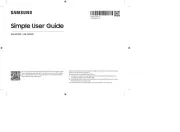
15 September 2025
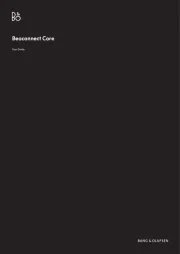
13 September 2025
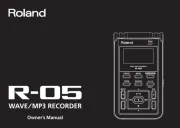
4 September 2025
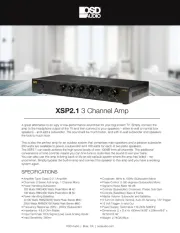
11 Augustus 2025
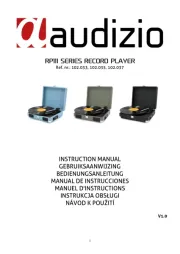
11 Augustus 2025
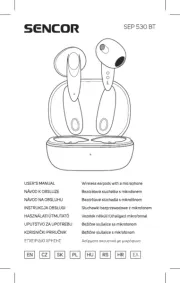
8 Augustus 2025
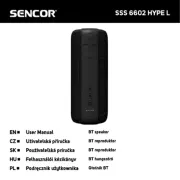
8 Augustus 2025
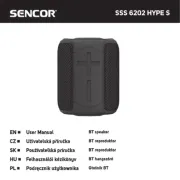
8 Augustus 2025
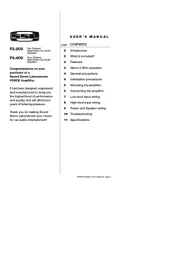
5 Augustus 2025
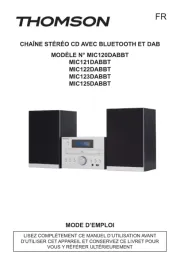
5 Augustus 2025